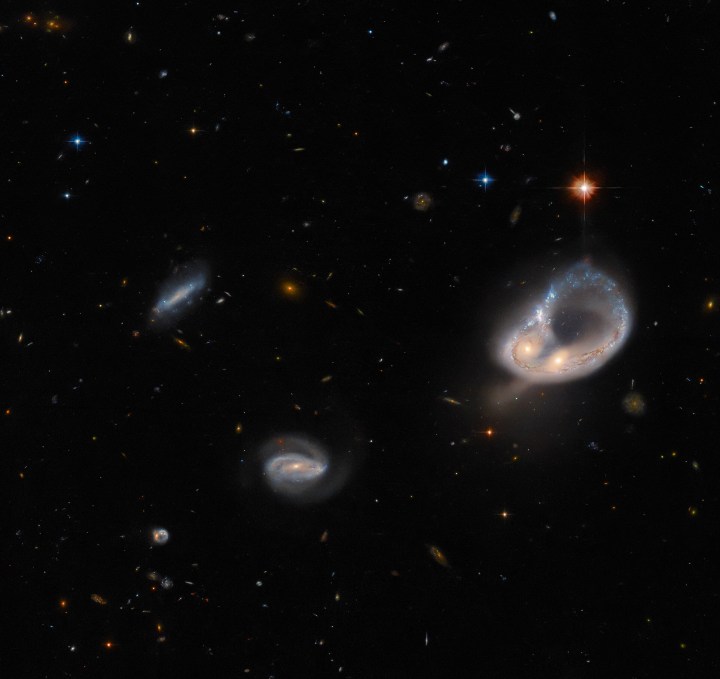This week’s image from the Hubble Space Telescope shows a collection of galaxies, with an unusual merging pair as the star of the show. The merging galaxy pair Arp-Madore 417-391 is located 670 million light-years from Earth in the constellation of Eridanus, which is in the southern celestial hemisphere.
The pair are classified as a “peculiar galaxy” because of the way their shapes have been distorted by their interaction. “The Arp-Madore catalog is a collection of particularly peculiar galaxies spread throughout the southern sky, and includes a collection of subtly interacting galaxie,s as well as more spectacular colliding galaxies,” Hubble scientists write.

Galaxy mergers happen when two or more galaxies get close enough together that their gravity begins to affect one another. When galaxies collide, one of them can be annihilated, or the two can merge to form one larger galaxy. Which outcome occurs is thought to be to do with the supermassive black holes that lie at the heart of almost every galaxy.
As galaxies get closer together, the tremendous gravitational forces involved can pull them out of their normal shapes. Galactic arms can be pulled into a new direction or, as in this case, even more dramatic distortions can occur. The two galaxies involved in this merger have formed a ring shape, with the two brightly glowing cores around their supermassive black holes sitting close together.
The image was captured with Hubble’s Advanced Camera for Surveys (ACS) instrument, which operates in the visible light and ultraviolet wavelengths, and which took some of Hubble’s most famous images such as its Ultra Deep Field image. This image was taken as part of a program to identify interesting objects that could be further studied in greater depth with tools like the James Webb Space Telescope.



